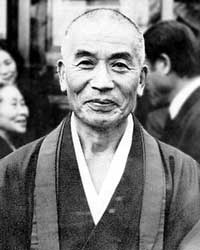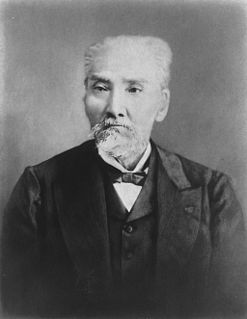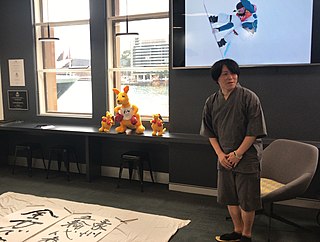 W
WMitsuo Aida was a Japanese poet and calligrapher known as The Poet of Zen. His work was influenced by Zen Buddhism and he is known for his works, Ningen damono, Okagesan, and Inochi ippai.
 W
WAtomi Kakei was a Japanese calligrapher, Maruyama school painter, scholar of Sino-Japanese studies, and Meiji period educator. She founded the Atomi School in 1875 in Kanda, Tokyo, one of the oldest women's universities in Japan.
 W
WChikako, Princess Kazu (Kazunomiya) was the wife of 14th shōgun Tokugawa Iemochi. She was renamed Lady Seikan'in-no-miya after she took the tonsure as a widow. She was the great-great-great aunt of Emperor Akihito, who reigned from 1989 to 2019.
 W
WEma Saikō was a Japanese painter, poet and calligrapher celebrated for her Chinese-style art in the late Edo period. Her specialisation as a bunjin, a painter of Chinese-style art using monochrome ink, was the bamboo plant which she perfected and which inspired her nom de plume. Her kanshi poetry is known for being self-reflective and having autobiographical quality. She was one of the most well-known and most praised Japanese artists of her age.
 W
WSaburō Hasegawa was a Japanese calligrapher, painter, art writer, curator, and teacher. He was an early advocate of abstract art in Japan and an equally vocal supporter of the Japanese traditional arts and Zen Buddhism. Throughout his career he argued for the connection between East Asian classical arts and Western abstract painting.
 W
WHosoi Kōtaku was a Confucian scholar, calligrapher and seal carver in early Edo period Japan. He went by many pseudonyms during his career, including the pen-names of Jirō Tayū, Hirosawa, Tamagawa, Shiyosai, Shōrin-an, and Kisshō-dō. His calligraphy was highly praised in the pre-war period.
 W
WIke Gyokuran was a Japanese Bunjinga painter, calligrapher, and poet. She was famous in Kyoto, Japan, during her lifetime, and she remains a celebrated artist in Japan.
 W
WMorita Shiryū was a postwar Japanese artist who revolutionized Japanese calligraphy into a global avant-garde aesthetic.
 W
WNakabayashi Chikutō, originally Nariaki (Japanese:中林 竹洞; was a Japanese painter in the nanga style. His other art names include Chūtan, Taigen’an and Tōzan Inshi.
 W
WNakahara Nantenbō , also known as Tōjū Zenchū, Tōshū Zenchū 鄧州全忠, and as Nantenbō Tōjū, was a Japanese Zen Master. In his time known as a fiery reformer, he was also a prolific and accomplished artist. He produced many fine examples of Zen Art and helped bridge the gap between older forms of Zen Buddhist art and its continuation in the 20th century.
 W
WNakamura Fusetsu was a Japanese painter in the yōga style. He was also known as a calligrapher.
 W
WŌmori Sōgen was a Japanese Rinzai Rōshi, a successor in the Tenryū-ji line of Rinzai Zen, and former president of Hanazono University, the Rinzai university in Kyoto, Japan. He became a priest in 1945.
 W
WOno Otsū, also known as Ono no Ozū, was a Japanese noblewoman, calligrapher, poet, painter and musician. She was a student of the arts in Kyoto, studying painting, calligraphy, music, chanting, and waka poetry. Her work was noticed by members of the Tokugawa shogunate, including Tokugawa Ieyasu and Tokugawa Hidetada, and she was often hired by them to teach members of their court. Because she was the author of works that impacted Japanese art during the Azuchi-Momoyama and Edo period, and served several prominent figures, Otsū was proclaimed one of the leading female calligraphers of premodern Japan.
 W
WKitaōji Rosanjin was the pseudonym for a noted artist and epicure during the early to mid-Shōwa period of Japan. His real name was Kitaōji Fusajirō , but he is best known by his artistic name, Rosanjin. A man of many talents, Rosanjin was also a calligrapher, ceramicist, engraver, painter, lacquer artist and restaurateur.
 W
WSasaki Gensō is a Japanese Rinzai Rōshi, a successor in the Tenryū-ji line of Rinzai Zen, a teacher of Jikishinkage-ryū swordsmanship, and a calligrapher.
 W
WCount Soejima Taneomi was a diplomat and statesman during early Meiji period Japan.
 W
WKazuaki Tanahashi is an accomplished Japanese calligrapher, Zen teacher, author and translator of Buddhist texts from Japanese and Chinese to English, most notably works by Dogen. He first met Shunryu Suzuki in 1964, and upon reading Suzuki's book Zen Mind, Beginner's Mind he stated, "I could see it's Shobogenzo in a very plain, simple language." He has helped notable Zen teachers author books on Zen Buddhism, such as John Daido Loori. A fellow of the World Academy of Art and Science—Tanahashi is also an environmentalist and peaceworker.
 W
WTomioka Tessai was the pseudonym for a painter and calligrapher in imperial Japan. He is regarded as the last major artist in the Bunjinga tradition and one of the first major artists of the Nihonga style. His real name was Yusuke, which he later changed to Hyakuren.
 W
WYamaoka Tesshū , also known as Ono Tetsutarō or Yamaoka Tetsutarō, was a famous samurai of the Bakumatsu period, who played an important role in the Meiji Restoration. He is also noted as the founder of the Itto Shoden Muto-ryu school of swordsmanship.
 W
WRen Yano is a Japanese traditional calligrapher and artist.